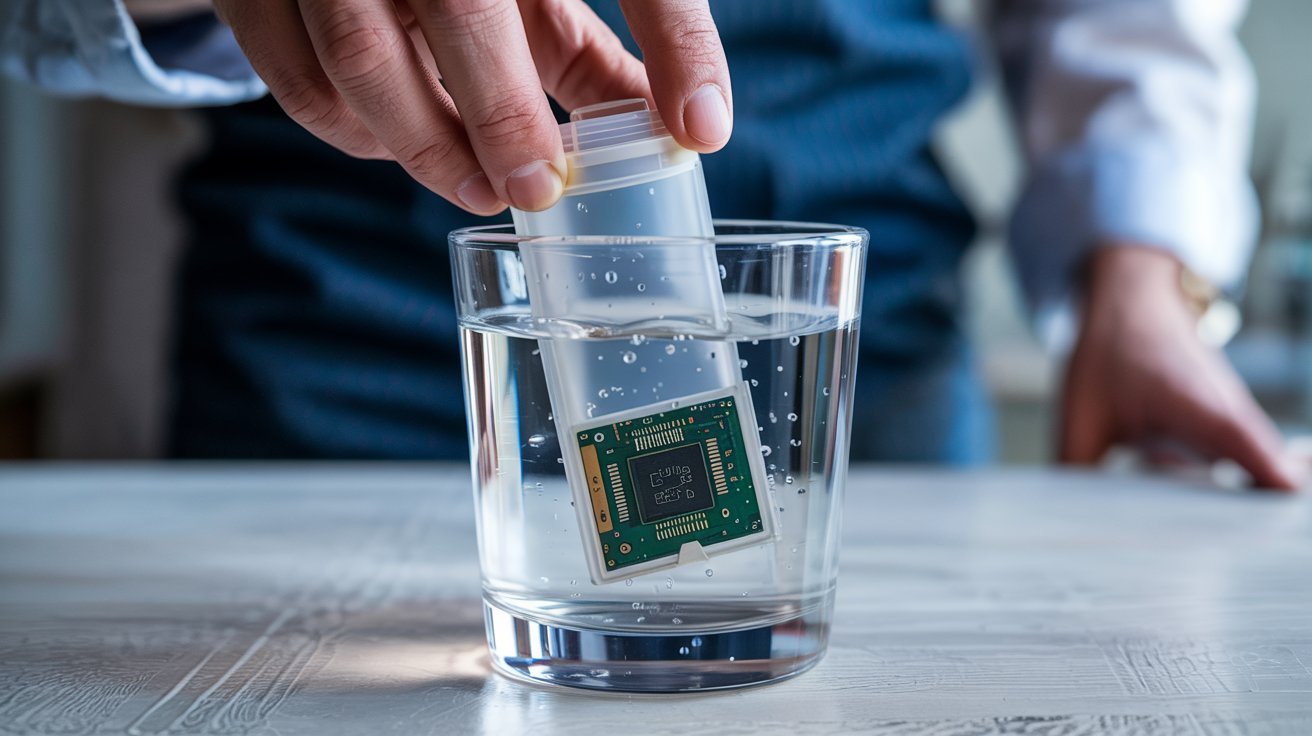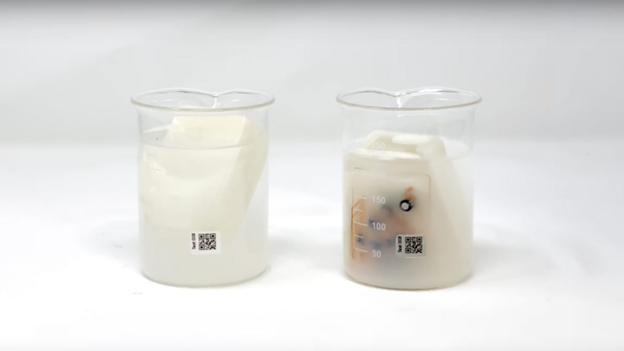Water-Soluble Electronics Casing: Sustainable Tech Solution for E-Waste


By Trendy Daily News
Aquafade’s water-soluble electronics casing is revolutionizing the tech industry by providing a sustainable alternative to traditional plastic casings
The increasing global demand for computers, smartphones, and electronic devices corresponds with growing concerns about electronic waste management.
According to a UN report from last year, electronic waste reached 62 million tons in 2022, equivalent to 1.5 million trucks that would extend around the equator if placed end to end. The majority of this e-waste was directed to landfills or incineration facilities. These disposal methods can impact environmental and human health due to the presence of toxic substances such as mercury and lead.
The report indicates that $62 billion in recoverable resources, including rare earth elements, are currently lost through improper disposal. E-waste recycling provides only 1% of the global demand for these elements, which are essential components in modern electronic devices.
With e-waste generation increasing at a rate five times faster than recycling capacity, researchers are developing alternative solutions. One such development is Aquafade, a water-soluble plastic that dissolves completely in approximately six hours when submerged in water. This material could be used for electronic device casings, potentially facilitating the recycling process and the recovery of valuable components.
Development Process
“For most electronic products, the disassembly process during recycling requires significant labor,” explains Samuel Wangsaputra, one of Aquafade’s inventors. “Aquafade allows this process to be decentralized and performed at home.”
Wangsaputra developed the concept after observing dishwasher pod casings. He partnered with Joon Sang Lee, his co-founder at UK-based startup Pentaform, and collaborated with Imperial College London material scientists Enrico Manfredi-Haycock and Meryem Lamari.
“We identified polyvinyl alcohol (PVOH) as a suitable material. The requirements included food safety certification and biodegradability in sewage systems,” Wangsaputra explains.
Technical Specifications
The development team focused on addressing transportation challenges in e-waste recycling, which contribute to costs and carbon emissions. The ability to remove plastic casings at home could reduce these factors.
The project has received UK government funding, and development continues at London’s Royal College of Arts. The team has focused on creating a material that combines water solubility with water resistance during normal use.
The product includes a protective coating made from a plastic polymer applied to the outer shell. This provides water resistance up to five meters for 30 minutes, protecting against spills and humidity. The dissolution process begins when a single screw is removed, creating an entry point for water. After 5-6 hours of submersion, the casing dissolves, leaving the electronic components for recycling.
Commercial Applications
Initial commercial implementation is planned for LED wristbands used at concerts. “These single-use devices are currently disposed of after events. We are in discussions with a major wristband manufacturer,” says Joon Sang Lee.
The team plans to release a mini PC with an Aquafade casing through the Pentaform website. Additional potential applications include injection-molded products such as luggage, car interiors, watches, sunglasses, and furniture.
Implementation Considerations
The current cost of Aquafade is twice that of standard ABS plastic. This represents 5-10% of total electronic product costs, according to Wangsaputra.
Environmental impact assessments are ongoing. Peter Edwards, emeritus professor of inorganic chemistry at the University of Oxford, notes the importance of studying the long-term environmental effects of the dissolved material and its potential relationship to microplastics. The development team acknowledges that long-term biodegradation studies are still in progress.
Michael Shaver, professor of polymer science at the University of Manchester, identifies areas requiring further research, including the mechanism, safety, and biodegradation rate. He notes that PVOH processing is generally well-managed in developed nations’ wastewater systems.
Technical requirements present additional challenges, including meeting specifications for electrical insulation, fire retardancy, and weather resistance in electronic applications.


